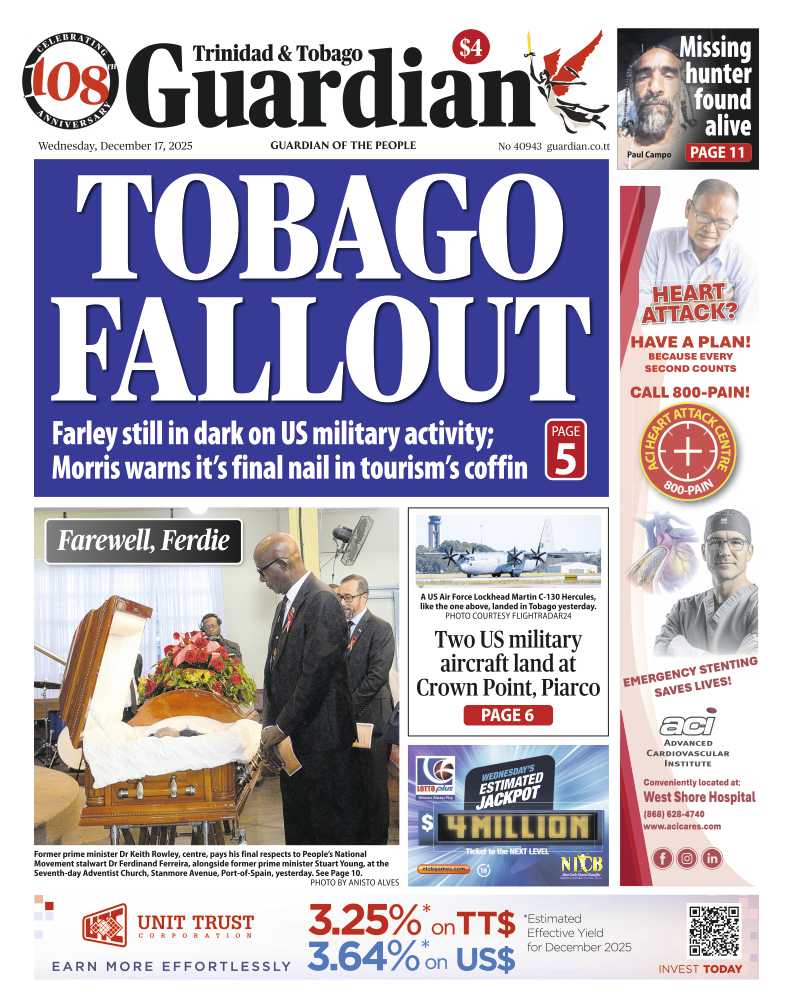With Tobago’s coral reefs at risk of bleaching in the coming weeks, the Institute of Marine Affairs is asking citizens to report occurrences over the next three months.
The US-based National Oceanic and Atmospheric Administration (NOAA) Coral Reef Watch has released the latest coral bleaching outlook for August to November for the Caribbean region. NOAA found that T&T’s coral bleaching stress gauge is currently at Watch Level, meaning that the waters around Tobago are above average sea surface temperature (SST) for this time of year. NOAA predicts that over the next five to eight weeks, Tobago and the rest of the Lesser Antilles have a 60 per cent chance of reaching Bleaching Alert Level One, which is a high likelihood of coral bleaching. Meanwhile, the outlook for the next nine to 12 weeks indicates a 60 per cent chance of reaching “Bleaching Alert Level Two, which is widespread coral bleaching and coral mortality.
“It is important for citizens who utilise the waters around Tobago to keep an eye out for changes to our reefs,” the IMA stated. Caribbean corals are typically shades of brown and green, but once bleaching begins, the corals appear pale and eventually fade to bone white. At this point, the corals have lost most of their algal pigments and cannot survive for extended periods without the needed algae. In many cases, they die.
The IMA explained that corals are capable of building massive underwater structures because of their relationship with the algae that live inside its tissue. The algae photosynthesise using sunlight to produce enough energy to supply both themselves and their coral host. In return, the coral provides the algae with a haven, stores essential nutrients and removes the algae’s waste. However, when corals become stressed through warm or very cold water, the algae are expelled from the coral. This causes the coral to turn white and is therefore referred to as coral bleaching.
When coral has lost its major source of food and if unfavourable conditions persist, it will starve and eventually die.
While coral reefs are lovely to look at, it’s main importance is the diverse and valuable ecosystem it provides to thousands of species of fish and hundreds of other sea creatures. According to NOAA, many drugs are also being developed using coral reef animals and plants as possible cures for cancer, arthritis, viruses and other diseases. In Tobago’s case, it is an attraction for tourists as some are easily accessible to swimmers. The IMA noted that in the last 40 years, coral reefs around the world have suffered from bleaching, where large sections of reef turned white as summertime sea temperatures became too warm because of global warming. It stated that the coral reefs of Tobago have also suffered from multiple bleaching events in the past, including 2005 and 2010, which have significantly degraded reef health.
Anyone coming across signs of coral bleaching should contact the Institute of Marine Affairs, The THA’s Department of Marine Affairs and Fisheries and the Environmental Research Institute in Charlotteville or the Buccoo Reef Trust.
The IMA said that it would be valuable if pictures and details such as location, depth and extent of bleaching observed can be provided.

